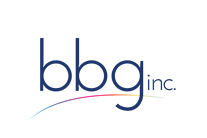Your particular monthly premium and drug costs depend on the type of Medicare coverage and the respective plan you have selected. Whether it’s a stand-alone Prescription Drug Plan if you are covered under Original Medicare (Option 1), or a Medicare Advantage HMO or PPO plan’s prescription drug coverage if you are enrolled in a Medicare Advantage Plan (Option 2), all Medicare Prescription Drug Plans are designed around four stages of coverage.
The Deductible Stage
You may have to pay the full cost of your drugs until you meet the annual prescription drug deductible and the coverage tiers and respective copays or coinsurance you pay for each prescription take effect. The thing to know is that depending on your plan you may have a full deductible, a modified or partial deductible, or you may have no prescription drug deductible at all.
The Initial Coverage Stage
During this period, you will pay a portion of the cost of your drugs, like a copayment or coinsurance, and your plan will pay the rest. During this phase you pay the copay or coinsurance described in your plan’s Summary of Benefits (or the actual cost of the drug if it is lower that the copay or coinsurance) and the plan covers the rest of the cost.
The Coverage Gap Stage
In 2022 you advance to this stage when you and your plan have paid $4,430 for drugs for the year. Upon reaching this phase you will be responsible for 25% of the cost of brand-name and generic drugs. The plan covers the rest. The coverage gap stage lasts until your out-of-pocket drug costs reach $7,050.
The Catastrophic Coverage Stage
Once you have spent $7,050 out-of-pocket on your covered drugs, you will pay $3.95 for generics, $9.85 for brand-name drugs, or 5% of the cost of each drug, whichever is greater. These amounts apply from the time you reach this stage until December 31, the end of the calendar year.
It’s good to know the following about each stage as it applies to your particular prescription drug coverage:
- The Deductible Stage: You may have to pay the full cost of your drugs until you meet the annual prescription drug deductible and the coverage tiers and respective copays or coinsurance you pay for each prescription take effect. No plan’s annual deductible can be higher than $480 in 2022.
The thing to know is that depending on your plan you may have a full deductible, a modified or partial deductible, or you may have no prescription drug deductible at all.
Some plans may feature a lower deductible than 2022’s $480 maximum. Or, with some plans the lower tier copays (eg. Tier 1 preferred generic, Tier 2 generic) may apply immediately and the deductible may only apply to a plan’s higher tiers. Or both.
So, for example, a plan could have a $150 deductible that is completely waived for Tier 1 and Tier 2 Generic Medications and applies only to Tiers 3, 4 and 5 which are typically Brand and Specialty Drugs or more expensive generics.
Some plans may even completely waive the deductible. Typically you’ll find the $0 deductible feature in certain Medicare Advantage HMO plans or in a select few of the higher premium, stand-alone prescription drug plans.
- The Initial Coverage Stage: During this period, you will pay a portion of the cost of your drugs, like a copayment or coinsurance, and your plan will pay the rest.
During the initial coverage period you pay the copay or coinsurance described in your plan’s Summary of Benefits (or the actual cost of the drug if it is lower that the copay or coinsurance) and the plan covers the rest of the cost.
The Initial Coverage Stage
| Covered medications typically fall into tiers to determine your copay/coinsurance |
| Tier 1 –lowest copay: most generic drugs |
| Tier 2 –medium copay: some higher cost generic/brand name drugs |
| Tier 3 –high copay/coinsurance: most brand name drugs |
| Tier 4 & 5 –highest copay/coinsurance: very high cost or specialty drugs |
- The Coverage Gap Stage (once referred to as “the donut hole”): In 2022 you advance to this stage when you and your plan have paid $4,430 for drugs for the year. Upon reaching this phase you will be responsible for 25% of the cost of brand-name and generic drugs. The plan covers the rest. The coverage gap stage lasts until your out-of-pocket drug costs reach $7,050.
“And I thought that ‘the donut hole’ was closed!” Technically, it was closed in 2020. Medicare’s definition of closed in this case is that from now on, costs are capped at 25% when you enter the Coverage Gap. Prior to 2020, Medicare beneficiaries paid a higher portion of the cost when they entered the gap.
- The Catastrophic Coverage Stage: Once you have spent $7,050 out-of-pocket on your covered drugs, you will pay $3.95 for generics, $9.85 for brand-name drugs, or 5% of the cost of each drug, whichever is greater. These amounts apply from the time you reach this stage until December 31, the end of the calendar year.
Everything then resets January 1 of the new year. Medicare annually adjusts (up) the dollar amounts governing the maximum deductible and the out-of-pocket costs associated with the various stages of coverage. The new amounts take effect January 1. Your expenditures reset to $0 and you return to the Deductible Stage to begin anew.
For more information, visit: https://bbg65plus.net/
Email: 65plus@bbginc.net

